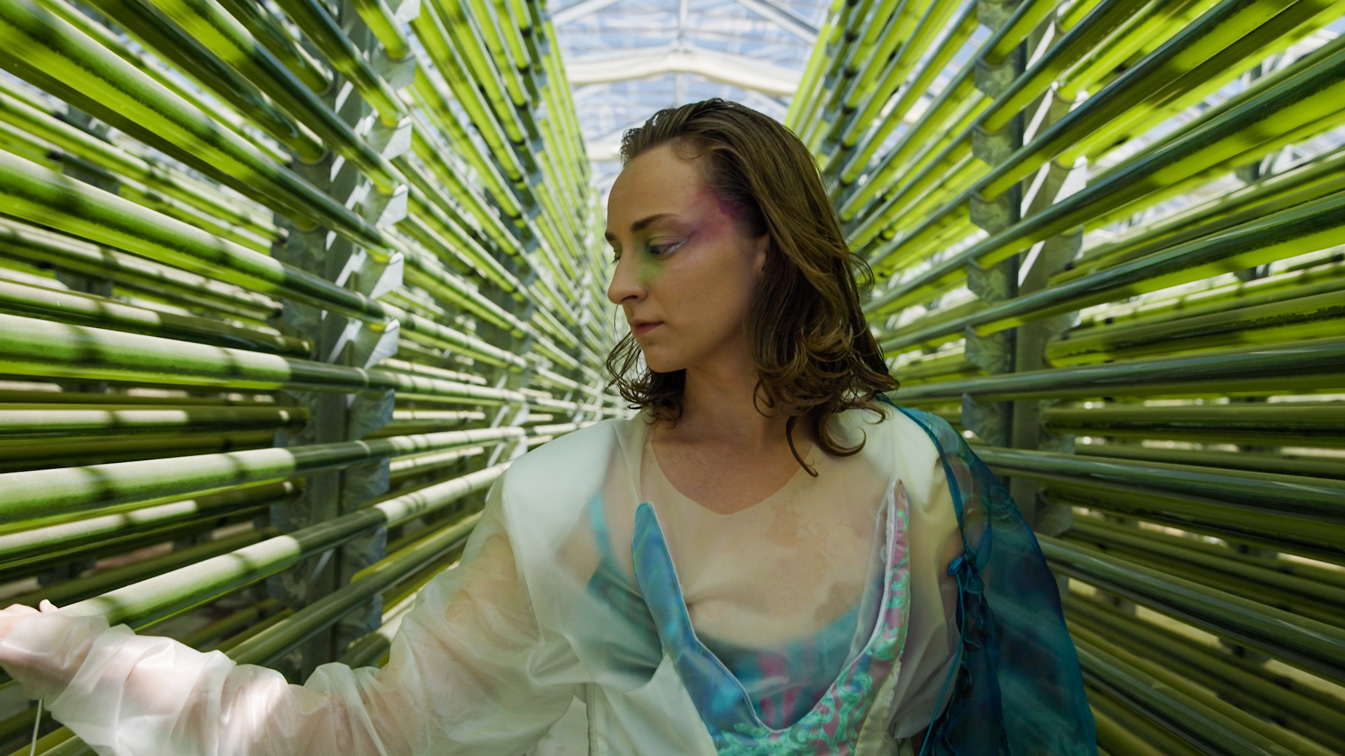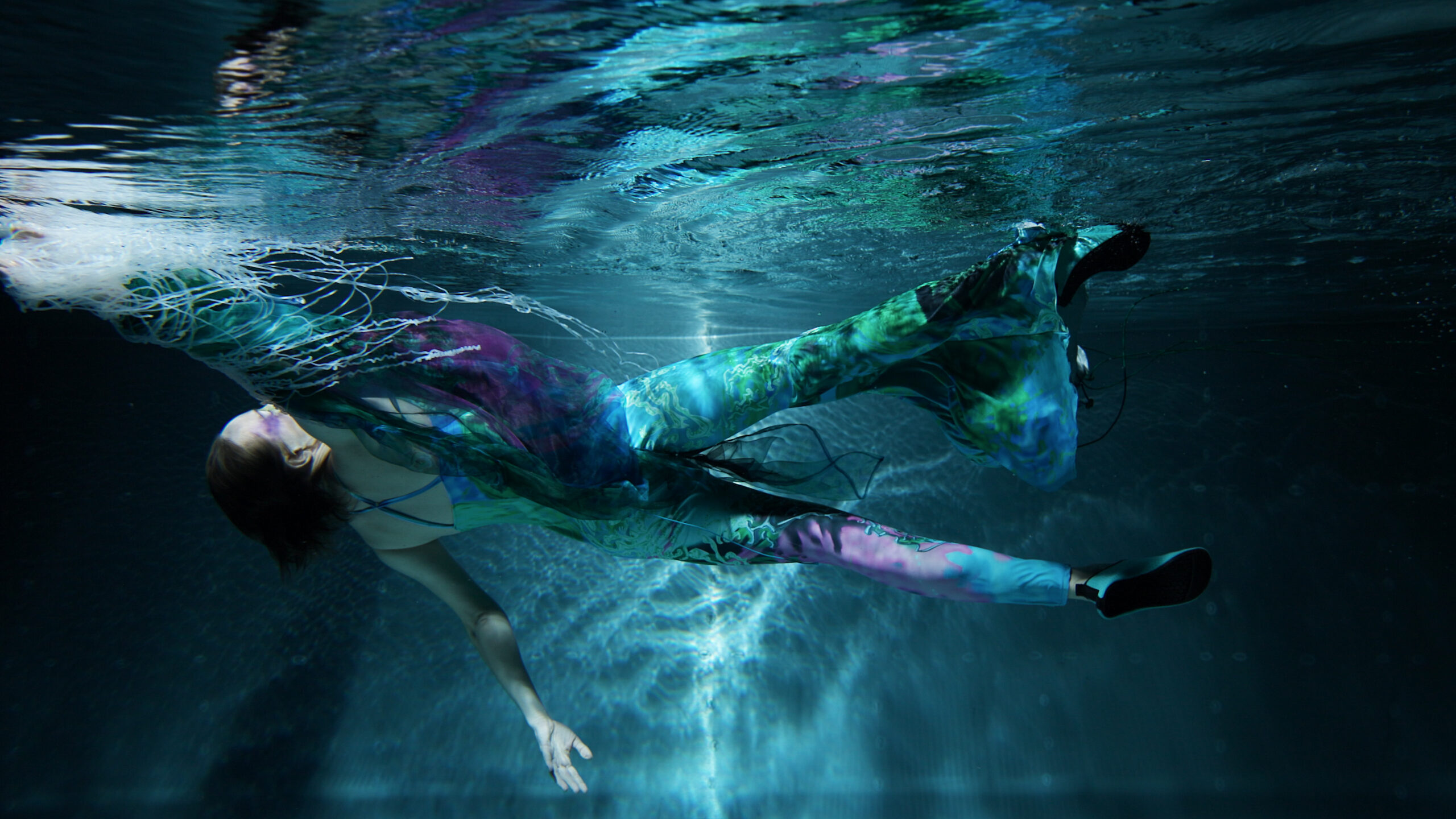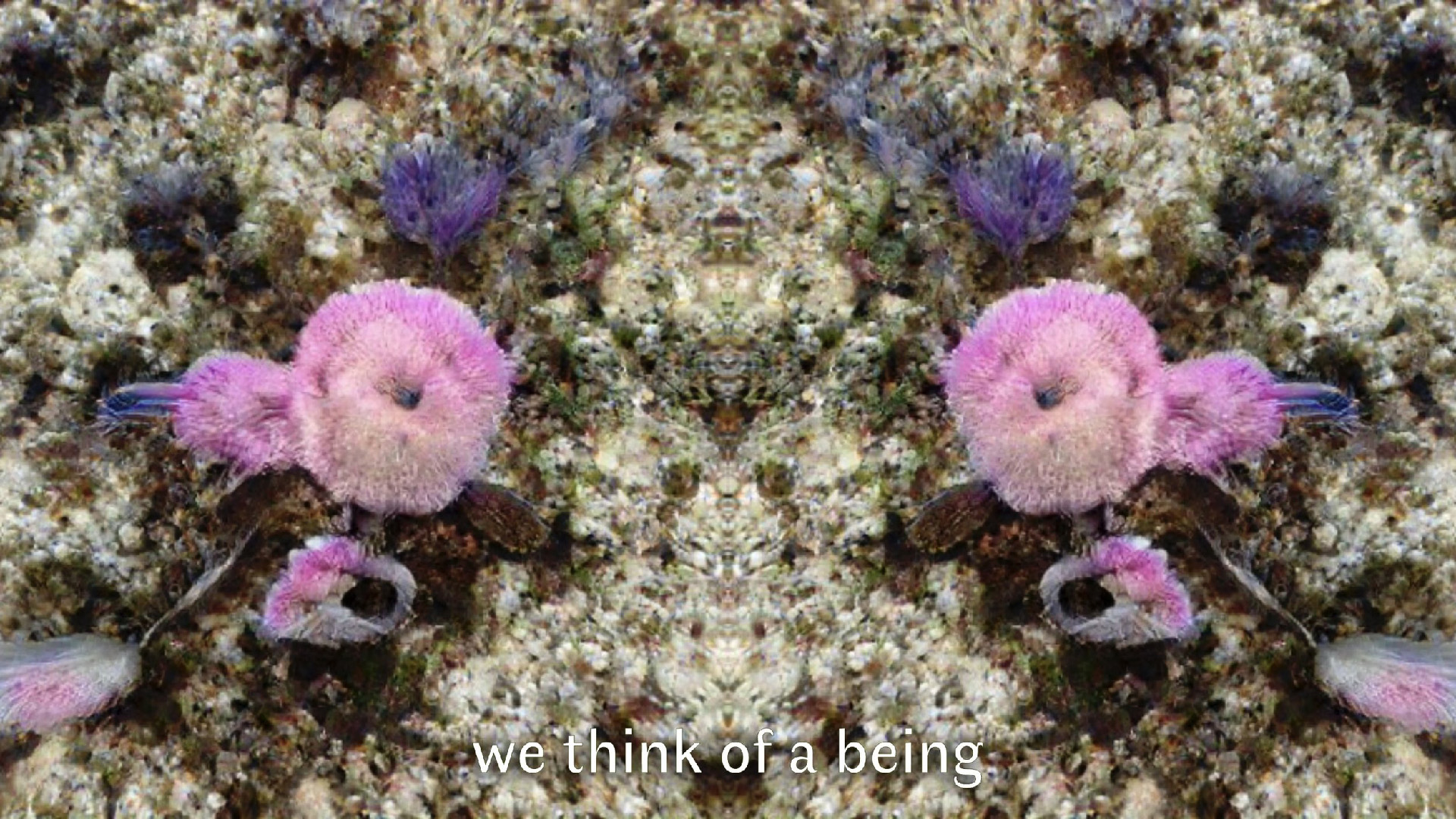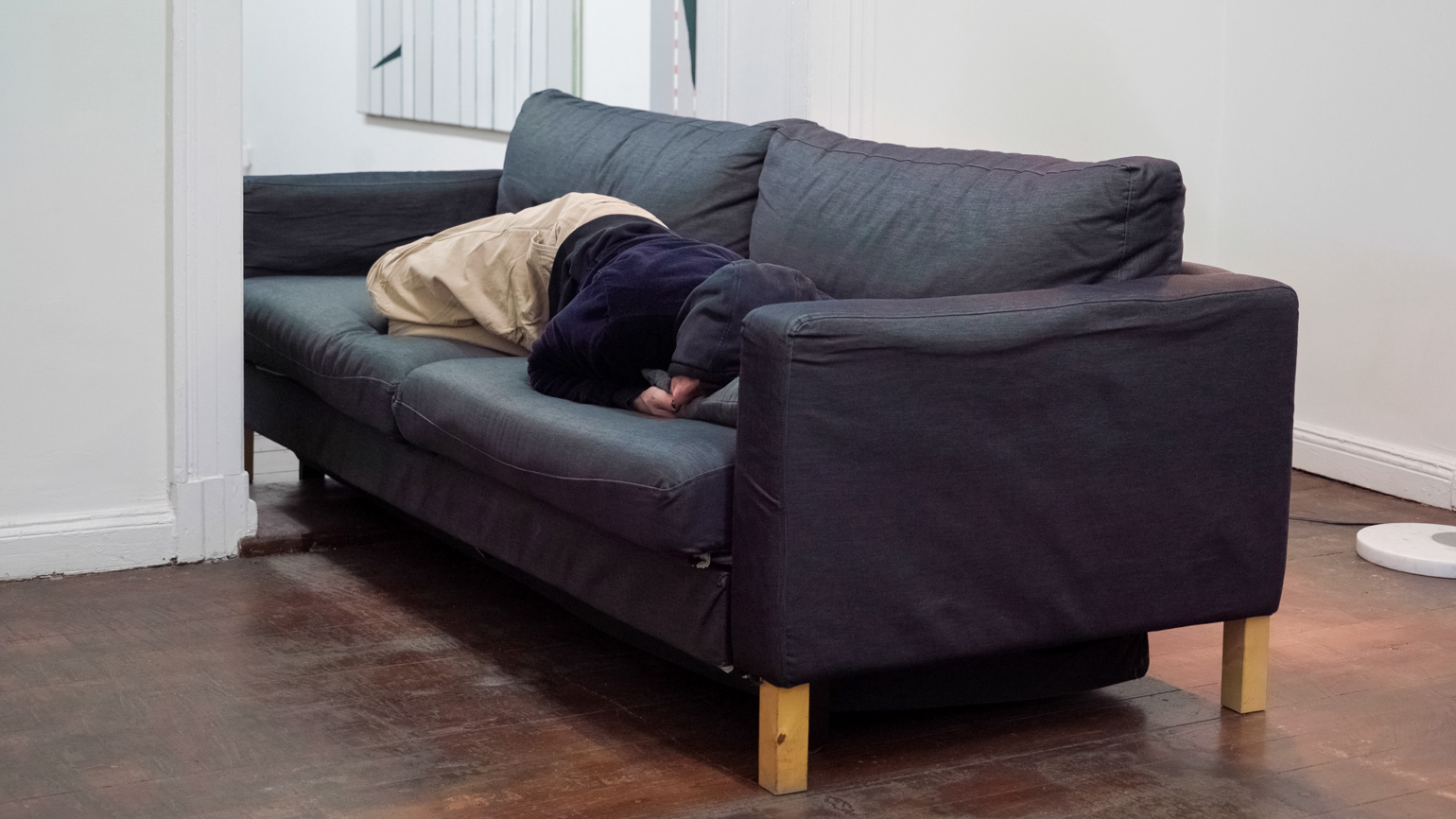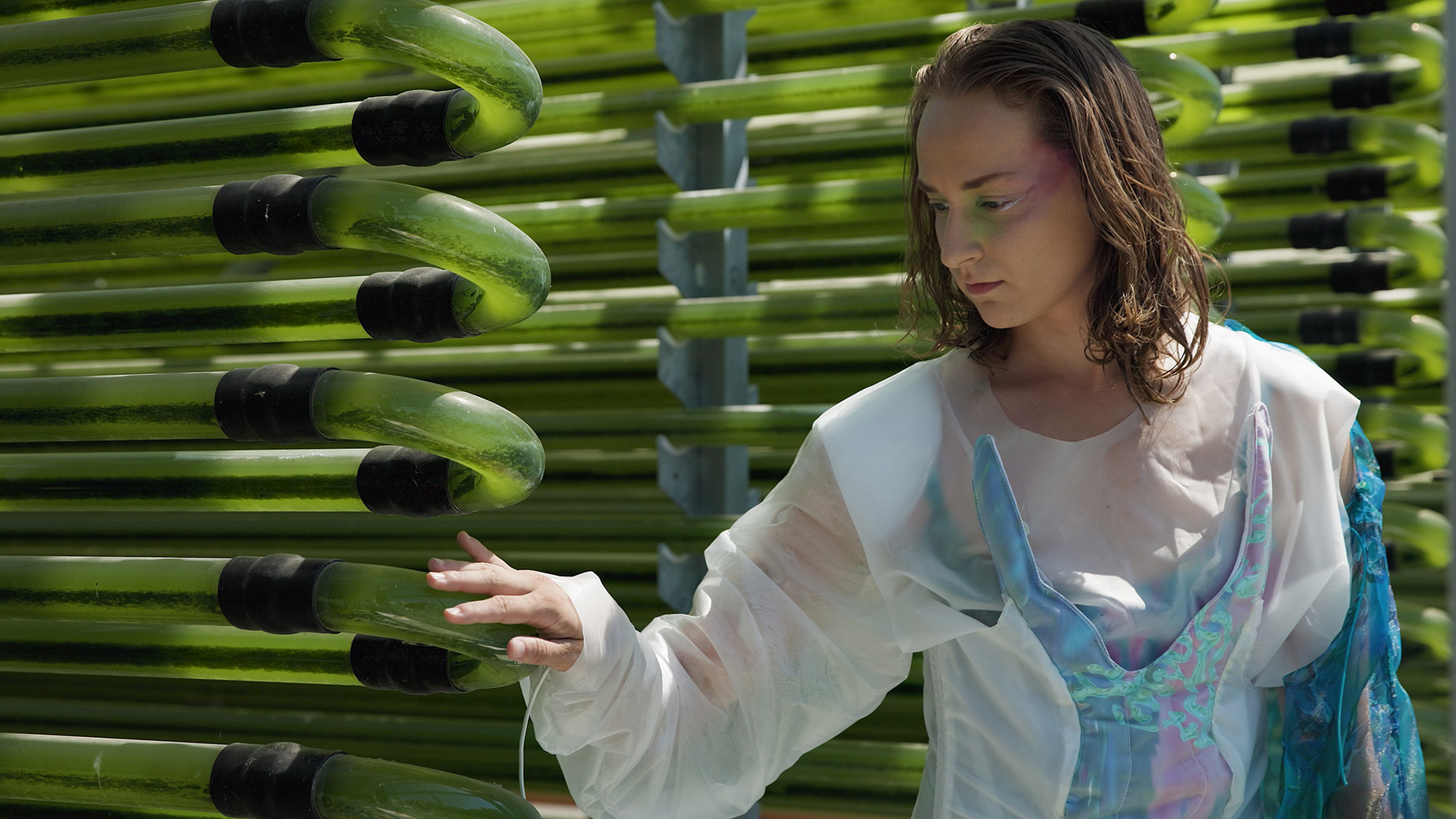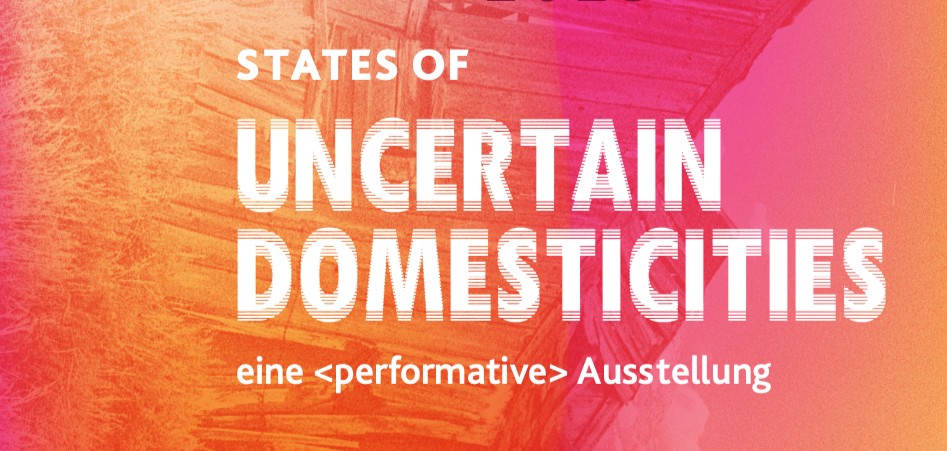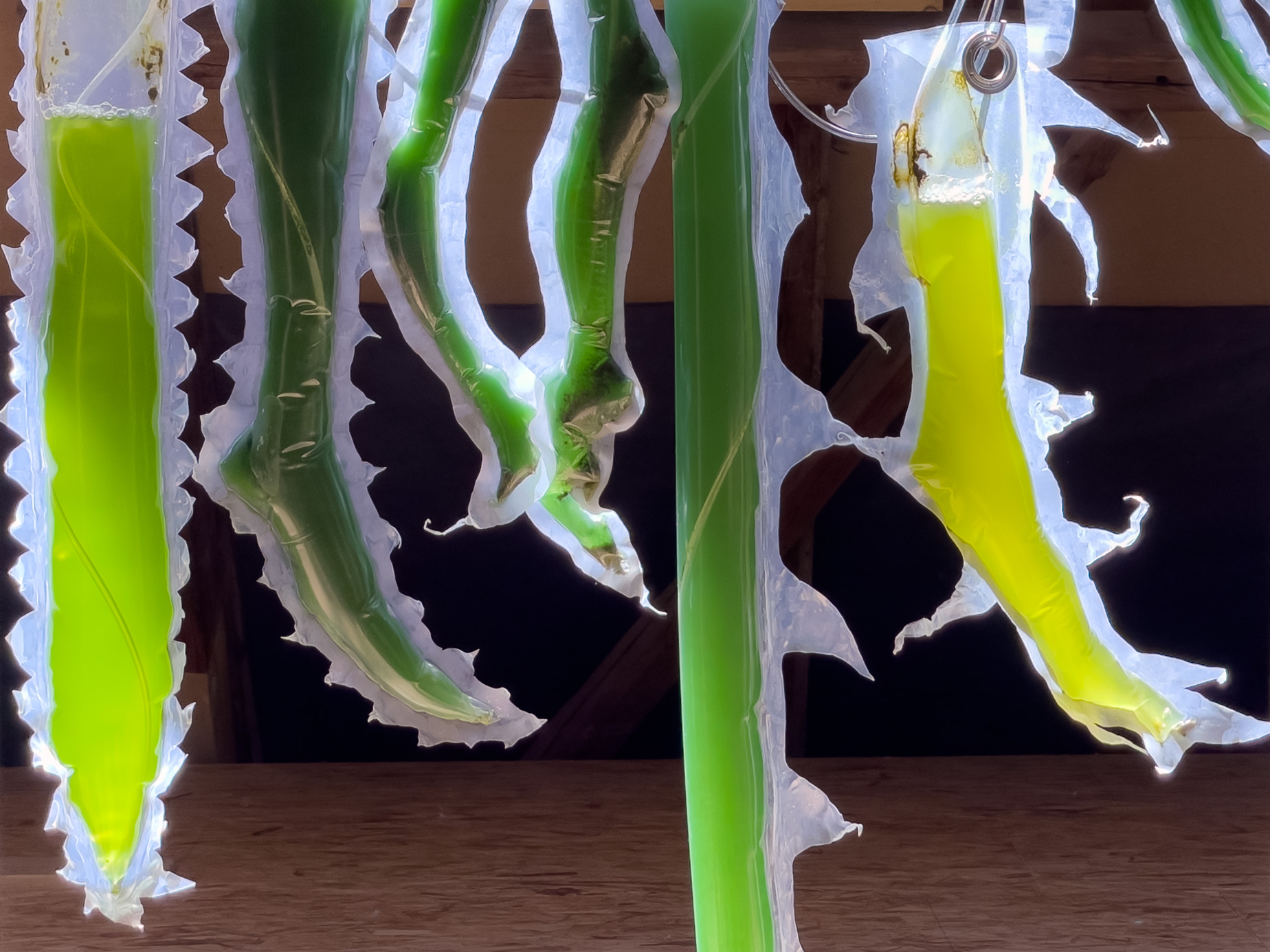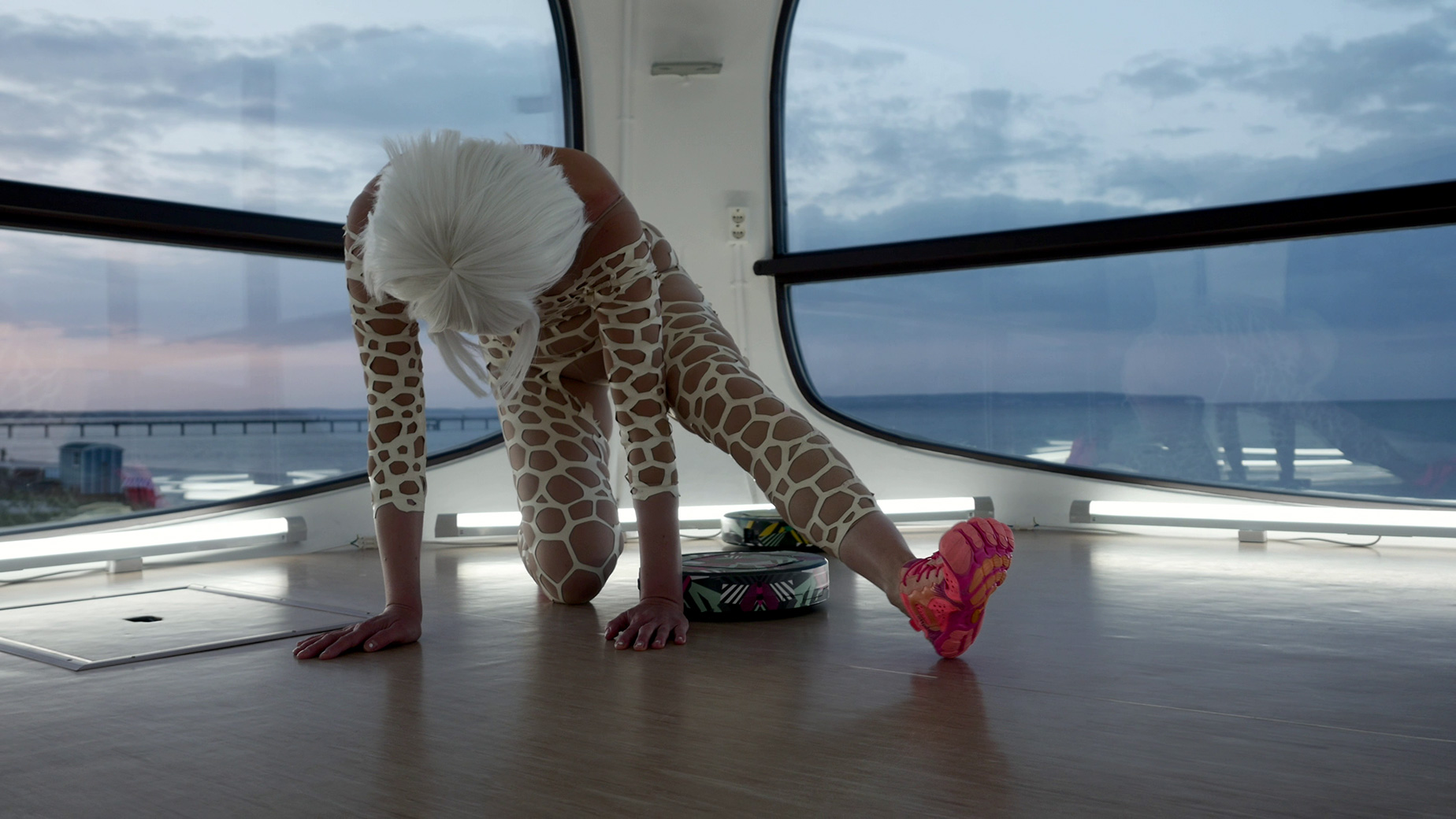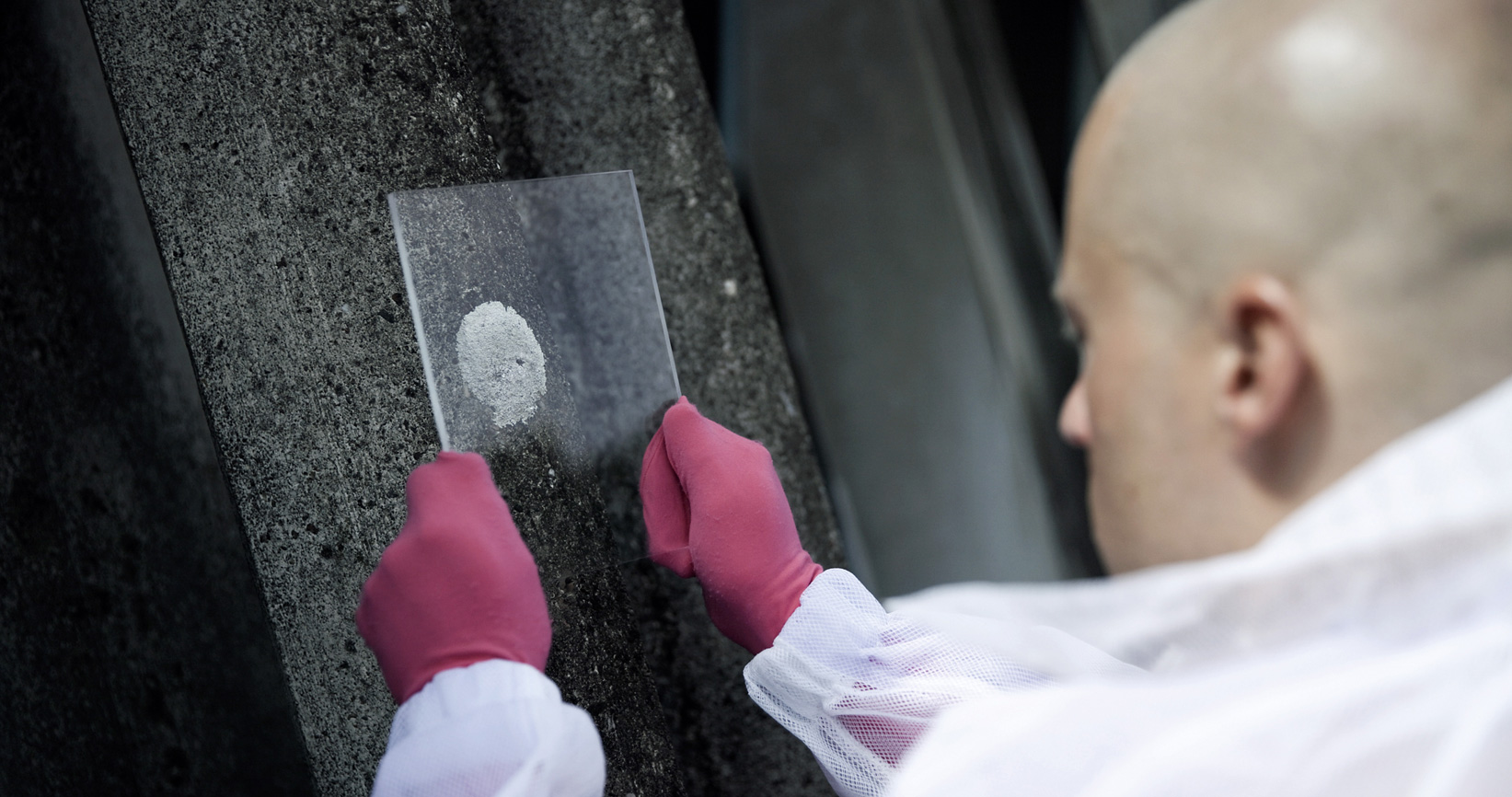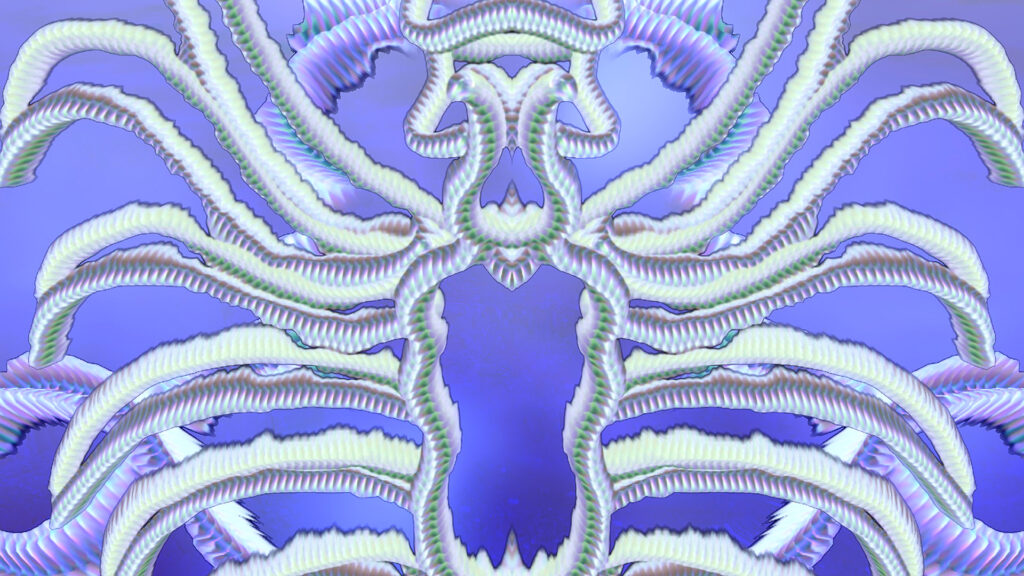
Short Film Program & Artist Talk / Kurzfilmprogramm & Gespräch
Fr, 28.11.2025, 18:15 Uhr
Schaubühne Lindenfels, Leipzig
»Radiant Futures« brings together six video works that present speculative visions of a post-human age. Between AI-generated worlds, fluid identities and hybrid life forms, the artists negotiate new alliances between humans, nature and technology. Inspired by the decentrally organised nervous system of the octopus, real and fictitious microorganisms and logics shaped by social media, scenarios are created in which linear thinking is replaced by complexity. The works reflect a world in flux, in which reality dissolves and recomposes itself – between surface and depth, body and data, memory and simulation. Video serves as a tool of the imaginative: for futures that are as tantalising as they are disturbing.
»Strahlende Zukünfte« versammelt sechs Videoarbeiten, die spekulative Visionen eines posthumanen Zeitalters entwerfen. Zwischen KI-generierten Welten, fluiden Identitäten und hybriden Lebensformen verhandeln die Künstler*innen neue Allianzen von Mensch, Natur und Technik. Inspiriert vom dezentral organisierten Nervensystem des Oktopus, von realen und fiktiven Mikroorganismen und durch Social Media geprägten Logiken, entstehen Szenarien, in denen lineares Denken durch Vielschichtigkeit abgelöst wird. Die Arbeiten reflektieren eine Welt im Wandel, in der sich Realität auflöst und neu zusammensetzt – zwischen Oberfläche und Tiefe, Körper und Daten, Erinnerung und Simulation. Video dient dabei als Werkzeug der Imagination: für Zukünfte, die ebenso verlockend wie verstörend strahlen.
Artists / Künstler*innen: WANG Chen, ETAGE, Stefan Hurtig, Gabriel S Moses, Annika Stoll, Ella Yolande
Curated by / Kurator*innen: Stefan Hurtig und Videocity
Artist Talk with / Künstler*innengespräch mit:
- Annika Stoll (artist / Künstlerin, Leipzig)
- Gabriel S Moses (artist / Künstler, Leipzig/Weimar)
- Elli Kuruş (artist, founder Digital Salon / Künstler*in, Gründer*in Digital Salon)
- Francis Hunger (artist, researcher, founder Digital Salon / Künstler, Forscher, Gründer Digital Salon, Leipzig/München)
- Moderation: Stefan Hurtig (artist and curator / Künstler und Kurator, Leipzig)
Videocity
Videocity is an international network of curators, art historians, artists and designers with a shared interest in media art. It was founded as a public art project in Basel in 2013 by cultural manager Dr Andrea Domesle and implemented in collaboration with the Pro Innerstadt Basel business association. Today, Videocity is a global team of 26 people with its headquarters as a non-profit association in Basel.
Videocity ist ein internationales Netzwerk von Kurator*innen, Kunsthistoriker*innen, Künstler*innen und Designer*innen mit Medienkunst als verbindendes Interesse. Es wurde als öffentliches Kunstprojekt 2013 von der Kulturmanagerin Dr. Andrea Domesle in Basel gegründet und zusammen mit dem Verband der Geschäftsleute Pro Innerstadt Basel implementiert. Heute ist Videocity ein weltweites Team mit 26 Personen mit Hauptsitz als gemeinnütziger Verein in Basel. www.videocity.org/leipzig-radiant-futures
Digital Salon Leipzig
The Digital Salon Leipzig is an informal association of twenty local artists who explore current digital technologies and their social impact in their work. It was founded in 2019 by the two artists and theorists Elli Kuruş and Francis Hunger. In monthly salons, members exchange ideas about their own work and pressing issues in the media art world and plan joint activities.
Der Digital Salon Leipzig ist ein informeller Zusammenschluss von zwanzig lokalen Künstler*innen, die sich in ihren Arbeiten mit aktuellen digitalen Technologien und deren gesellschaftlichen Auswirkungen auseinandersetzen. Gegründet wurde er 2019 von den beiden Künstler*innen und Theoretiker*innen Elli Kuruş und Francis Hunger. In monatlichen Salons tauschen sich die Mitglieder über eigene Arbeitsstände und virulente Themen in der Medienkunstwelt aus und planen gemeinsame Aktivitäten.
Tickets: 9 / 7 €
Schaubühne Lindenfels
Karl-Heine-Straße 50
04229 Leipzig




